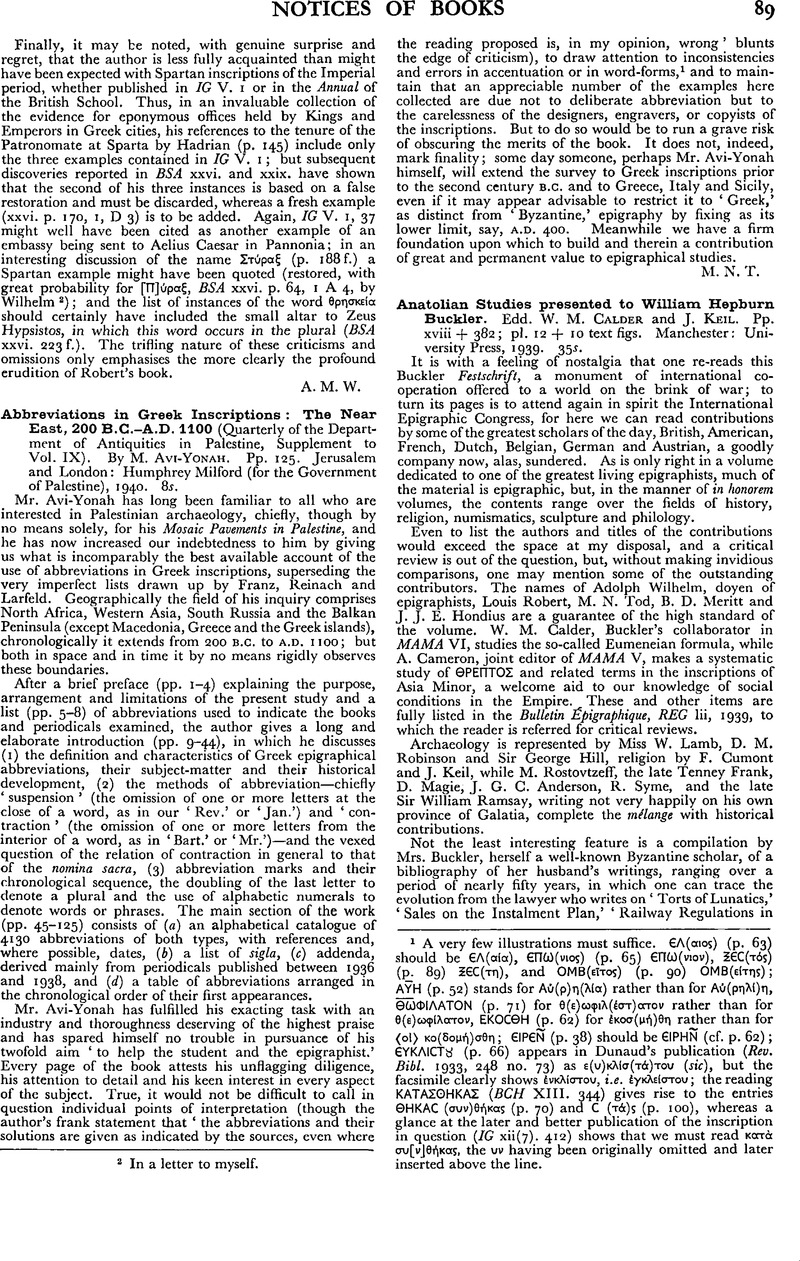No CrossRef data available.
Article contents
Abbreviations in Greek Inscriptions: The Near East, 200 B.C.–A.D. 1100 (Quarterly of the Department of Antiquities in Palestine, Supplement to Vol. IX). By M. Avi-Yonah. Pp. 125. Jerusalem and London: Humphrey Milford (for the Government of Palestine), 1940. 8s.
Published online by Cambridge University Press: 18 September 2015
Abstract

- Type
- Notices of Books
- Information
- Copyright
- Copyright © The Society for the Promotion of Hellenic Studies 1942
References
page 89 note 1 A very few illustrations must suffice. ЄΛ(αιος) (p. 63) should be ЄΛ(αία), ![]() (p. 65)
(p. 65) ![]() ,
, ![]() (p. 89)
(p. 89) ![]() , and
, and ![]() (p. 90)
(p. 90) ![]() ;
; ![]() (p. 52) stands for
(p. 52) stands for ![]() rather than for
rather than for ![]() ,
, ![]() (p. 71) for
(p. 71) for ![]() rather than for
rather than for ![]() (p. 62) for
(p. 62) for ![]() rather than for
rather than for ![]() (p. 38) should be
(p. 38) should be ![]() (cf. p. 62);
(cf. p. 62); ![]() (p. 66) appears in Dunaud's publication (Rev. Bibl. 1933, 248 no. 73Google Scholar) as
(p. 66) appears in Dunaud's publication (Rev. Bibl. 1933, 248 no. 73Google Scholar) as ![]() (sic), but the facsimile clearly shows
(sic), but the facsimile clearly shows ![]() , i.e.
, i.e. ![]() ; the reading
; the reading ![]() (BCH XIII. 344Google Scholar) gives rise to the entries
(BCH XIII. 344Google Scholar) gives rise to the entries ![]() (p. 70) and C
(p. 70) and C ![]() (p. 100), whereas a glance at the later and better publication of the inscription in question (IG xii(7). 412) shows that we must read
(p. 100), whereas a glance at the later and better publication of the inscription in question (IG xii(7). 412) shows that we must read ![]()
![]() , the
, the ![]() having been originally omitted and later inserted above the line.
having been originally omitted and later inserted above the line.
page 89 note 2 In a letter to myself.




